by Jon LeSage, editor and publisher, Green Auto Market
Here’s my take on the 10 most significant and interesting occurrences during the past week…….
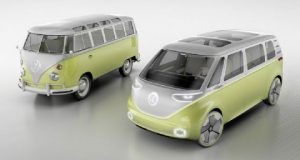 Detroit auto show: The North American International Auto Show has not been dominated by certain vehicle types, such as pickups and SUVs might have done in the past. Plug-in electrified vehicles have played their part, along with futuristic concept vehicles and mobility services. Back-to-back with the influential CES 2017 show in Las Vegas, the two car shows have had a few things in common. Volkswagen’s I.D. Buzz has taken a lot of attention. The electric microbus of the future is built on the MEB platform and may be able to travel 270 miles once fully charged. It offers maximum space utilization with all-wheel drive, electric motors at the front and rear axles, a fully autonomous driving mode (“I.D. Pilot”), and a new generation of display elements and controls…. The all-new Chevy Bolt electric car continues to win big awards, taking the North American Car of the Year award. The Chrysler Pacifica minivan was named North American Utility of the Year, the first time the award has been given out, and it also comes in a plug-in hybrid variation….. BMW showed its new 530 iPerformance plug-in hybrid. At 248 hp, it will go to 60 mph in about 5.9 seconds. It will also deliver up to 14 miles in all-electric mode, earning an EPA-rated 64 MPGe. The rear-wheel drive version will start at $51,400 while the all-wheel drive xDrive version will begin at $53,700…… Ford presented its vision for the “City of Tomorrow.” It looks at how near-term mobility advancements – including autonomous and electric vehicles, ride-sharing, ride-hailing, and connected vehicles – interact with urban infrastructure and create a transportation ecosystem to deal with challenges such as gridlock and air pollution. Ford’s City Solutions team has been working with cities around the world to propose, pilot, and develop mobility solutions. The team also is beginning to collaborate with Bloomberg Philanthropies and its global coalition of mayors…… Toyota rolled out a redesigned 2018 Camry with more interior space, advancements in its drive system, and a hybrid version that gets Prius-like fuel economy……… Waymo CEO John Krafcik announced that the former Google self-driving car division has been able to drop the cost of its Lidar sensors from about $75,000 per vehicle to about $7,500, which will help lower the cost of autonomous vehicle technologies for interested automaker partners. These new Lidar systems will be installed soon in 100 self-driving Chrysler Pacifica minivans that Waymo acquired from Fiat Chrysler Automobiles…… Audi unveiled the all-new Q8 SUV plug-in hybrid that will be out in production next year. It will be Audi’s second plug-in hybrid to enter the U.S. market, following the Audi A3 Sportback e-tron station wagon.
Detroit auto show: The North American International Auto Show has not been dominated by certain vehicle types, such as pickups and SUVs might have done in the past. Plug-in electrified vehicles have played their part, along with futuristic concept vehicles and mobility services. Back-to-back with the influential CES 2017 show in Las Vegas, the two car shows have had a few things in common. Volkswagen’s I.D. Buzz has taken a lot of attention. The electric microbus of the future is built on the MEB platform and may be able to travel 270 miles once fully charged. It offers maximum space utilization with all-wheel drive, electric motors at the front and rear axles, a fully autonomous driving mode (“I.D. Pilot”), and a new generation of display elements and controls…. The all-new Chevy Bolt electric car continues to win big awards, taking the North American Car of the Year award. The Chrysler Pacifica minivan was named North American Utility of the Year, the first time the award has been given out, and it also comes in a plug-in hybrid variation….. BMW showed its new 530 iPerformance plug-in hybrid. At 248 hp, it will go to 60 mph in about 5.9 seconds. It will also deliver up to 14 miles in all-electric mode, earning an EPA-rated 64 MPGe. The rear-wheel drive version will start at $51,400 while the all-wheel drive xDrive version will begin at $53,700…… Ford presented its vision for the “City of Tomorrow.” It looks at how near-term mobility advancements – including autonomous and electric vehicles, ride-sharing, ride-hailing, and connected vehicles – interact with urban infrastructure and create a transportation ecosystem to deal with challenges such as gridlock and air pollution. Ford’s City Solutions team has been working with cities around the world to propose, pilot, and develop mobility solutions. The team also is beginning to collaborate with Bloomberg Philanthropies and its global coalition of mayors…… Toyota rolled out a redesigned 2018 Camry with more interior space, advancements in its drive system, and a hybrid version that gets Prius-like fuel economy……… Waymo CEO John Krafcik announced that the former Google self-driving car division has been able to drop the cost of its Lidar sensors from about $75,000 per vehicle to about $7,500, which will help lower the cost of autonomous vehicle technologies for interested automaker partners. These new Lidar systems will be installed soon in 100 self-driving Chrysler Pacifica minivans that Waymo acquired from Fiat Chrysler Automobiles…… Audi unveiled the all-new Q8 SUV plug-in hybrid that will be out in production next year. It will be Audi’s second plug-in hybrid to enter the U.S. market, following the Audi A3 Sportback e-tron station wagon.- Green car sales: The Tesla Model S took back the No .1 spot in plug-in vehicle sales during December, bumping out the Chevy Volt, according to sales figures from HybridCars.com and Baum & Associates. Chevrolet did have a good month with the brand-new Chevy Bolt coming in at No. 10 with 579 units sold, far more than a few other electric cars had seen at their birth in the marketplace. The Volt came in at 3,691 units sold (following the Model S at 5,300 in estimated sales). The Volt beat its previous all-time of high 3,351 sold. The Toyota Prius Prime did pretty well, closing the month at 1,641 units sold. Plug-in sales were up 64.8% over the previous month and up 73.9% over December 2015. Hybrid sales were up 21.2% over November and up 6.5% over December 2015.
- Faraday Future at CES: While the future of Faraday Future has been called in question with key executives leaving and as lawsuits have been filed by unpaid suppliers, CES 2017 turned out to be about as good for the startup as it was the year before. Revealing its FF91 electric SUV has gone well so far, with the company announcing that 64,124 reservations were placed within 36 hours of its launch at the show. The company didn’t clarify how many in this group made their $5,000 down payment. Faraday Future says that it’s a production car and deliveries will begin in 2018. Will the company be able to get through its tough times and have its North Las Vegas consistently running at full speed?
- ChargePoint Express Plus: ChargePoint has launched ChargePoint Express Plus, a fast DC charging solution that is ready for the electric cars, buses, and trucks. Express Plus can charge today’s newest electric vehicles, such as the Chevy Bolt, at their maximum rate; is equipped to charge upcoming EVs such as the Tesla Model 3 and is ready to deliver maximum charging speed to EVs coming to market in the years to come. A modular platform designed for businesses and charging centers along major roadways or transit depots, Express Plus can deliver up to 400 kilowatts (kW) to an EV, the company said in its release.
- Gigafactory starts up: Tesla Motor’s Gigafactory in the Reno, Nevada, area has started rolling its first battery cells off production lines to power the company’s energy storage products and, before long, the Model 3 electric car. More than 2,900 people are already working at the facility, and more than 4,000 additional jobs (including temporary construction jobs) will be added during 2017 through the partnership between Tesla and Panasonic Corp. Tesla also plans to begin shipping the Powerwall 2 home batteries by the end of this month, at prices that by some estimates are 30% cheaper than the closest competitor’s product.
- Chrysler Portal: Chrysler unveiled its 250-mile range Portal electric minivan Concept at CES 2017 that may have autonomous vehicle capabilities. The new EV will offer touch screens, ports, and social media options to find interest from Millennial car shoppers. Parent company FCA said it will be an urban mobility vehicle of the future. The six-passenger minivan “explores the possibility of what a family transportation vehicle could look like,” Chrysler said.
- Toyota AI concept car: Toyota Motor Corp. revealed the “Concept-i” at CES 2017. Embedded in the concept car is “Yui,” Toyota’s artificial intelligence system. Yui monitors driver behavior, interacting with the driver to facilitate the driver-vehicle relationship customized to the driver’s tastes, patterns, and road conditions. Toyota said it was built from the inside out, with a focus on making it immersive, energetic and, approachable. The Concept-i “will enhance that relationship between car and driver.” Toyota said it will be testing some of the concept vehicle’s technologies on Japan’s roads in the next few years.
- Volvo carsharing: Volvo Cars will establish a new shared mobility business unit as part of a broad expansion of its carsharing and mobility services strategy. It will be based around Sunfleet, one of the world’s first car sharing companies that has been operated by the automaker since 1998. Based in Sweden, the Sunfleet division has around 50,000 subscribers generating approximately 250,000 transactions in more than 50 Swedish cities, the company said.
- Clean Energy stock value: Natural gas prices have risen over 30% in the last two months to current levels of around $3.30 per million British thermal units since the beginning of November 2016. That rally in pricing should be good for business for Clean Energy Fuels, according to a Seeking Alpha investor and analyst. Clean Energy should be able to enter into fuel contracts at better prices. Growth may come from the transit bus and refuse truck markets. About 60% of new refuse trucks are operating on natural gas in the U.S., the analyst said.
- Battery cells for EVs: Volkswagen Group is weighing and balancing a big decision as it prepares to hit its ambitious target of manufacturing up to three million electric vehicles per year by 2025. The German automaker is reviewing bids from six battery cell suppliers for its EV lineup. Several other automakers are in a similar situation as VW – should they manufacture their own battery cells? Tesla Motors and Panasonic have started this process at the Gigafactory in Nevada this month, but other automakers are tending to see outsourcing to more than one battery cell manufacturer as the necessary way to go.

 The question of which clean technology will prevail in the car of the future continues to permeate the auto industry. Plug-in electrified vehicle sales led the way in recent months, breaking the 1% mark of total sales in the U.S. for the first time in November; and seeing ambitious PEV product launch announcements from Volkswagen, Daimler, BMW, and Toyota in the fall. That was triggered by Tesla receiving more than 400,000 down payments soon after showing its Model 3 reveal during the spring; and post-VW “dieselgate” scandal government crackdowns increased in Europe, the U.S., and South Korea.
The question of which clean technology will prevail in the car of the future continues to permeate the auto industry. Plug-in electrified vehicle sales led the way in recent months, breaking the 1% mark of total sales in the U.S. for the first time in November; and seeing ambitious PEV product launch announcements from Volkswagen, Daimler, BMW, and Toyota in the fall. That was triggered by Tesla receiving more than 400,000 down payments soon after showing its Model 3 reveal during the spring; and post-VW “dieselgate” scandal government crackdowns increased in Europe, the U.S., and South Korea. 3 new global electrified vehicles the automaker plans to introduce in the next five years, including hybrid versions of the F-150 pickup and Mustang in the U.S., and a plug-in hybrid Transit Custom van in Europe. A high-volume autonomous hybrid vehicle designed for commercial ride hailing or ride sharing will be launched globally in 2021, starting in North America. Ford will also launch two new, pursuit-rated hybrid police vehicles. The automaker will be adding 700 direct new U.S. jobs and investing $700 million during the next four years, creating the new Manufacturing Innovation Center at its Flat Rock Assembly Plant in Michigan.
3 new global electrified vehicles the automaker plans to introduce in the next five years, including hybrid versions of the F-150 pickup and Mustang in the U.S., and a plug-in hybrid Transit Custom van in Europe. A high-volume autonomous hybrid vehicle designed for commercial ride hailing or ride sharing will be launched globally in 2021, starting in North America. Ford will also launch two new, pursuit-rated hybrid police vehicles. The automaker will be adding 700 direct new U.S. jobs and investing $700 million during the next four years, creating the new Manufacturing Innovation Center at its Flat Rock Assembly Plant in Michigan.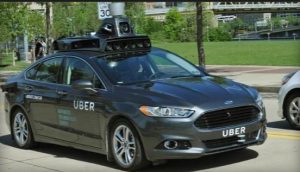 Michigan now leading the way: Last month, Michigan Gov. Rick Snyder signed a package of bills to clear the way for self-driving cars to operate on public roads and re-establish the state as the leader in automotive innovation. The Michigan bills establish regulations for the testing, use, and eventual sale of autonomous vehicle technology, and were crafted to more clearly define how self-driving vehicles can be legally used on public roadways. The new laws allow testing of vehicles without steering wheels, pedals, or needed human control – which aims to propel Michigan ahead of California, which had been the leading state in the U.S. for testing autonomous vehicles.
Michigan now leading the way: Last month, Michigan Gov. Rick Snyder signed a package of bills to clear the way for self-driving cars to operate on public roads and re-establish the state as the leader in automotive innovation. The Michigan bills establish regulations for the testing, use, and eventual sale of autonomous vehicle technology, and were crafted to more clearly define how self-driving vehicles can be legally used on public roadways. The new laws allow testing of vehicles without steering wheels, pedals, or needed human control – which aims to propel Michigan ahead of California, which had been the leading state in the U.S. for testing autonomous vehicles.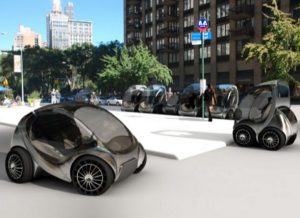 Automakers took serious steps forward during 2016 showing their commitment to mobility services and the changing identity of automakers in the near future.
Automakers took serious steps forward during 2016 showing their commitment to mobility services and the changing identity of automakers in the near future. The Federal Highway Administration
The Federal Highway Administration 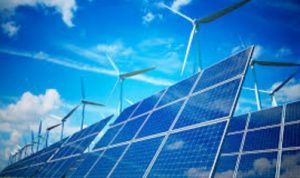 Renewables: While not yet officially announced, Scientific American just reported that renewable-energy sources such as solar and wind are expected to account for 8% of U.S. electricity-generation capacity in 2017, according to the U.S. Department of Energy. Solar growth is behind much of it.
Renewables: While not yet officially announced, Scientific American just reported that renewable-energy sources such as solar and wind are expected to account for 8% of U.S. electricity-generation capacity in 2017, according to the U.S. Department of Energy. Solar growth is behind much of it.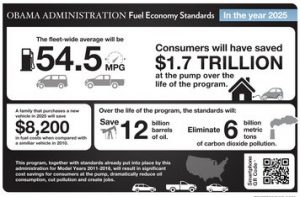 Feds differ on fuel economy rules: It appears that the Environment Protection Agency and the National Highway Traffic Safety Administration are taking different approaches to working with the new administration on the fuel economy and emissions regulations; it may also signify the Obama administration supporting the standards but encouraging flexibility with automakers on how it’s all carried out.
Feds differ on fuel economy rules: It appears that the Environment Protection Agency and the National Highway Traffic Safety Administration are taking different approaches to working with the new administration on the fuel economy and emissions regulations; it may also signify the Obama administration supporting the standards but encouraging flexibility with automakers on how it’s all carried out.  Plug-in sales trends and new car launches: Plug-in hybrid was the top-selling category over all-electric vehicles in 2016, which switched over a sales trend that had been led by the Tesla Model S and Model X, and Nissan Leaf, in all-electric vehicle sales. The revamped 2016 Chevy Volt has been the top seller in the U.S. and the Ford Fusion Energi nearly doubled its sales in November over the previous year. The Mitsubishi Outlander PHEV has been leading the electric vehicle market this year in Europe, beating the Renault Zoe and Nissan Leaf.
Plug-in sales trends and new car launches: Plug-in hybrid was the top-selling category over all-electric vehicles in 2016, which switched over a sales trend that had been led by the Tesla Model S and Model X, and Nissan Leaf, in all-electric vehicle sales. The revamped 2016 Chevy Volt has been the top seller in the U.S. and the Ford Fusion Energi nearly doubled its sales in November over the previous year. The Mitsubishi Outlander PHEV has been leading the electric vehicle market this year in Europe, beating the Renault Zoe and Nissan Leaf.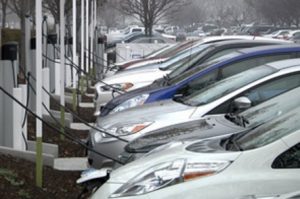 PG&E charging network: A years-long struggle over
PG&E charging network: A years-long struggle over 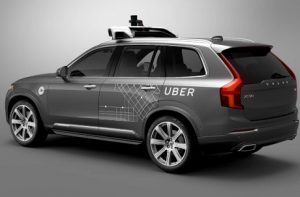 Uber has been testing its autonomous, shared rides for the past month in California,
Uber has been testing its autonomous, shared rides for the past month in California, 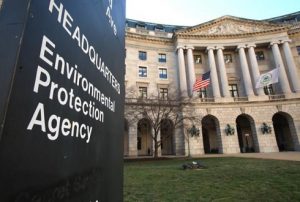 EPA opponent appointed: President-elect Donald Trump hit hard last week in his Environmental Protection Agency appointment – naming Oklahoma Attorney General Scott Pruitt as administrator, which will need to meet Senate approval.
EPA opponent appointed: President-elect Donald Trump hit hard last week in his Environmental Protection Agency appointment – naming Oklahoma Attorney General Scott Pruitt as administrator, which will need to meet Senate approval. 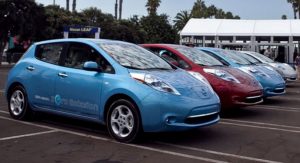 While plug-in electrified vehicles did break the 1% mark for total U.S. new vehicle sales last month, and hybrids moved back to being over 2%, we’re still a long ways away from them making up a substantial share of the market. The same is true for advanced fuels like renewable diesel – sales volumes are up but it’s still very early in adoption of these new alternative fuels.
While plug-in electrified vehicles did break the 1% mark for total U.S. new vehicle sales last month, and hybrids moved back to being over 2%, we’re still a long ways away from them making up a substantial share of the market. The same is true for advanced fuels like renewable diesel – sales volumes are up but it’s still very early in adoption of these new alternative fuels.